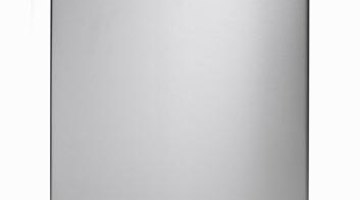Dishwasher Venting Rules
Dishwashers produce a lot of steam during the cleaning process due to the high heat and water used inside the appliance. The steam must be vented properly to avoid moisture issues in the floor and cabinets around the unit. There are different rules for venting depending on how the model is designed.
Air Gap Facts

The main venting needed by a dishwasher is the air gap. The air gap prevents the appliance from sucking water from the sink into which it drains. Otherwise, the dishwasher would pull in waste water when it needs clean water, according to home improvement adviser Danny Lipford. Most local building codes require this gap to be installed into the garbage disposal or at the top of the sink. There are a few ways to install this gap that don't involve cutting a hole in your sink or interfering with the disposal.
Sink Air Gap
The traditional way to install an air gap involves punching a hole in the flat section of the top of your sink, explains Home Tips. This can be tricky if you have a ceramic or cast iron sink. Steel sinks usually are easy to cut through with a hammer and a circular punch that fits the air gap hose. A simple piece of PVC vent pipe is run from the vent connector on the dishwasher to the opening, and a matching cover is placed over it.
Alternative Air Gaps
A run of PVC venting pipe that extends higher than the drain of the sink is sufficient to create a working air gap, states licensed home inspector Charles Buell. The pipe can be installed in the wall behind the dishwasher, but it still needs an opening with a cover on the exterior of the wall. This will allow water to flow out of the air gap if something causes a clog. If you don't leave an opening, the clog will cause the dishwasher water to back up into the sink.
Steam Venting
The other form of venting needed in a dishwasher involves the release of hot steam during the drying cycle. Most dishwashers blow this steam out through a vent in the door instead of a separate pipe. This heat and moisture can damage the undersides of your countertops. Install a steam deflector plate to the bottom of the countertop directly over the dishwasher to prevent this damage, recommends Miele. Granite and concrete materials don't need this extra protection.
References
Writer Bio
Jessica Kolifrath is a competent copywriter who has been writing professionally since 2008. She is based in the Atlanta area but travels around the Southeastern United States regularly. She currently holds an associate degree in psychology and is pursuing a bachelor's degree in the field.
Photo Credits
- Ryan McVay/Photodisc/Getty Images
More Articles



